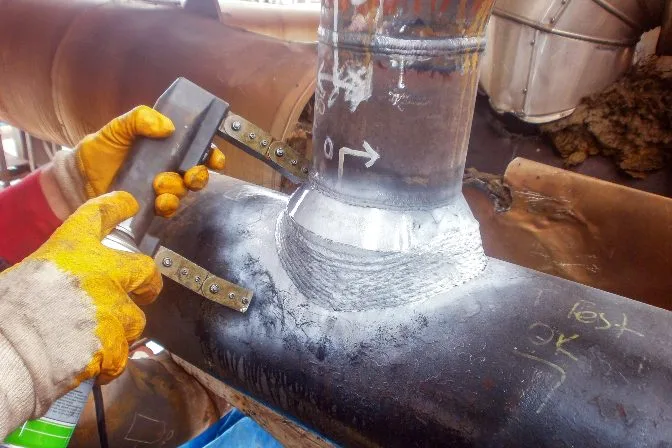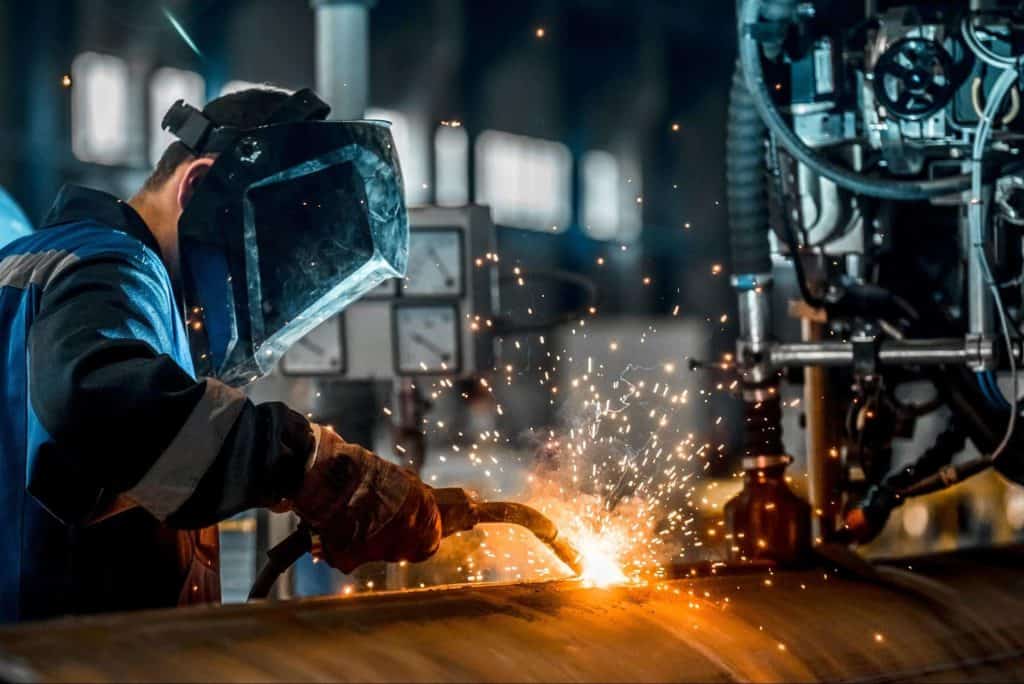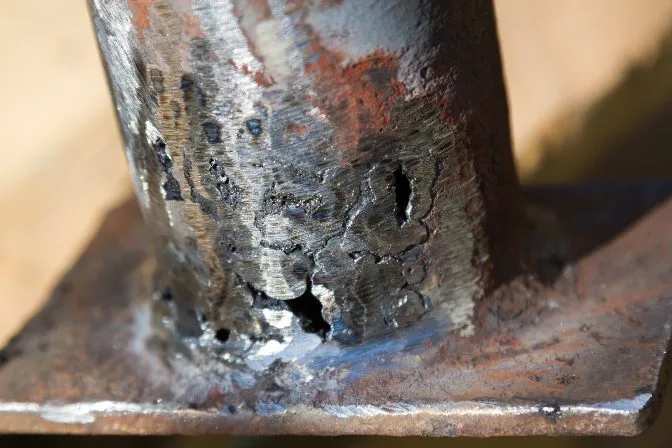Elevate Your Requirements with Expert Welding Inspection Milwaukee Services
Elevate Your Requirements with Expert Welding Inspection Milwaukee Services
Blog Article
A Detailed List for Effective Welding Assessment Practices
In the world of welding, the stability of frameworks is vital, requiring an extensive method to evaluation practices. An extensive checklist functions as an essential device in guaranteeing adherence to industry standards, incorporating important pre-welding, in-process, and post-welding assessments. By systematically addressing product confirmation, weld high quality, and extensive paperwork, organizations can significantly boost security and performance. What certain elements should be focused on in each phase to achieve optimum results? Exploring these essential elements can yield understandings that exceptionally influence welding procedures.
Understanding Welding Criteria
Welding criteria play an essential duty in guaranteeing the top quality and security of bonded parts and structures. These requirements develop the criteria for products, treatments, testing, and assessment, thereby offering a structure for regular high quality guarantee in welding procedures. Various organizations, consisting of the American Welding Society (AWS), the International Organization for Standardization (ISO), and the American Culture of Mechanical Designers (ASME), have actually developed detailed criteria that govern different elements of welding.
Recognizing welding standards is vital for experts in the area, as adherence to these standards minimizes the danger of flaws and failings in bonded joints. These criteria cover specific demands for weld high quality, consisting of appropriate resistances, the sort of welding strategies to be used, and the qualifications needed for welders and examiners.

Pre-Welding Assessment Steps
Prior to any welding process starts, a complete pre-welding inspection is crucial to determine possible issues that might compromise the high quality of the weld. This first step acts as a critical foundation for making certain compliance with suitable welding codes and standards.
The initial step in the pre-welding inspection is to confirm the products being made use of. This includes checking for the right type and grade of steels as defined in the project paperwork. Next off, it is critical to examine the fit-up of the elements to make certain correct alignment and joint setup. Imbalance can cause poor infiltration and structural weaknesses.
In addition, reviewing the sanitation of the surface areas is essential; impurities such as corrosion, oil, or paint can negatively impact the high quality of the weld. Following this, an extensive evaluation of the welding devices must be carried out, making sure that it is calibrated and in good working problem.
Last but not least, assessing the credentials of the welding employees is critical. Welders have to have the required accreditations and experience to carry out the specific welds needed for the job. By adhering to these pre-welding evaluation steps, the probability of flaws and failures in the final weld can be dramatically decreased.

In-Process Assessment Techniques
In-process evaluation methods play an important duty in guaranteeing the stability and top quality of welds as they are being performed. These strategies allow inspectors to determine issues or discrepancies from specs in actual time, thereby making certain and preventing costly repair work adherence to style needs.
One trick technique involves visual evaluation, where examiners examine the weld grain for harmony, infiltration, and correct account. This can be complemented by the use of evaluates to determine weld dimensions, guaranteeing compliance with established tolerances. Furthermore, the application of non-destructive screening (NDT) techniques, such as ultrasonic testing or magnetic bit testing, during the welding procedure can disclose subsurface imperfections that might not show up on the surface.
An additional crucial element is checking welding criteria, consisting of voltage, amperage, and travel speed. Consistency in these criteria is critical for attaining optimum weld top quality. Recording these specifications during the welding procedure gives a deducible record for future reference.
Training employees in appropriate evaluation techniques and making use of ideal devices improves the effectiveness of in-process examinations. By incorporating these methods, organizations can attain get more better welds, lower rework, and eventually guarantee the safety and integrity of welded structures.
Post-Welding Top Quality Checks
Following the conclusion of welding procedures, post-welding quality checks are essential to verify that the welds meet all defined standards and needs. These checks are necessary for guaranteeing the integrity and toughness of the welded joints. The examination process commonly begins with an aesthetic evaluation, analyzing for surface issues such as cracks, porosity, or insufficient blend.
Ultimately, non-destructive testing (NDT) approaches, such as ultrasonic testing, radiographic testing, or magnetic particle screening, might be used to discover internal problems that are not noticeable to the nude eye. Each method has its distinct benefits and is picked based on the weld's place, material kind, and the nature of the application.
Furthermore, verifying dimensional accuracy is a crucial aspect of post-welding high quality checks. This includes gauging the weld's positioning, dimension, and account to guarantee conformity with design requirements. Finally, evaluating the mechanical buildings of the weld, including tensile strength and ductility, can offer additional guarantee of performance under functional problems. Generally, detailed post-welding inspections are vital for maintaining adherence, performance, and safety and security to governing and sector requirements.
Paperwork and Reporting
Exactly how can effective documents and reporting enhance the welding assessment process? Precise documentation and detailed coverage are important parts that guarantee the honesty and quality of welding procedures. Welding Inspection Milwaukee. They offer as an official record of examination findings, facilitating liability and traceability in compliance with market requirements

A well-structured coverage system makes it possible for examiners to plainly interact any kind of discrepancies, non-conformances, or locations needing improvement. This openness promotes an atmosphere of constant enhancement, as stakeholders can readily analyze previous performance and carry out corrective activities.
Additionally, reliable paperwork includes thorough records such as welding treatment specifications (WPS), welder credentials, and inspection lists. These aspects provide a framework for evaluating weld high quality and adherence to developed standards. In case of disagreements or top quality problems, complete paperwork acts as a dependable referral, decreasing obscurity and safeguarding all celebrations involved.
Lastly, preserving arranged records helps in training and licensing workers, ensuring that industry finest practices are supported. Ultimately, thorough paperwork and reporting not only enhance the welding assessment procedure yet also add to the total safety and security and integrity of welded structures.

Conclusion
To conclude, a thorough checklist for effective welding inspection practices is crucial for making sure quality and safety in welded frameworks. Adherence to established welding requirements, thorough pre-welding inspections, strenuous in-process analyses, and comprehensive post-welding quality checks jointly contribute to the stability of welded joints. In published here addition, diligent documentation and coverage of examination findings enhance liability and facilitate continual renovation. Implementing these methods will substantially assist in conformity with industry criteria and inevitably cultivate a society of high quality in welding operations.
Welding requirements play a crucial role in guaranteeing the high quality and security of bonded elements and frameworks. Numerous organizations, consisting of the American Welding Culture (AWS), the International Company for Standardization (ISO), and the American Society of Mechanical Designers (ASME), have created comprehensive criteria that control various elements of i was reading this welding.
Adhering to the conclusion of welding procedures, post-welding quality checks are important to confirm that the welds fulfill all defined criteria and needs - Welding Inspection Milwaukee.In verdict, an extensive list for efficient welding assessment techniques is important for making sure quality and safety and security in welded structures. Adherence to developed welding requirements, careful pre-welding evaluations, rigorous in-process assessments, and complete post-welding quality checks jointly add to the stability of bonded joints
Report this page